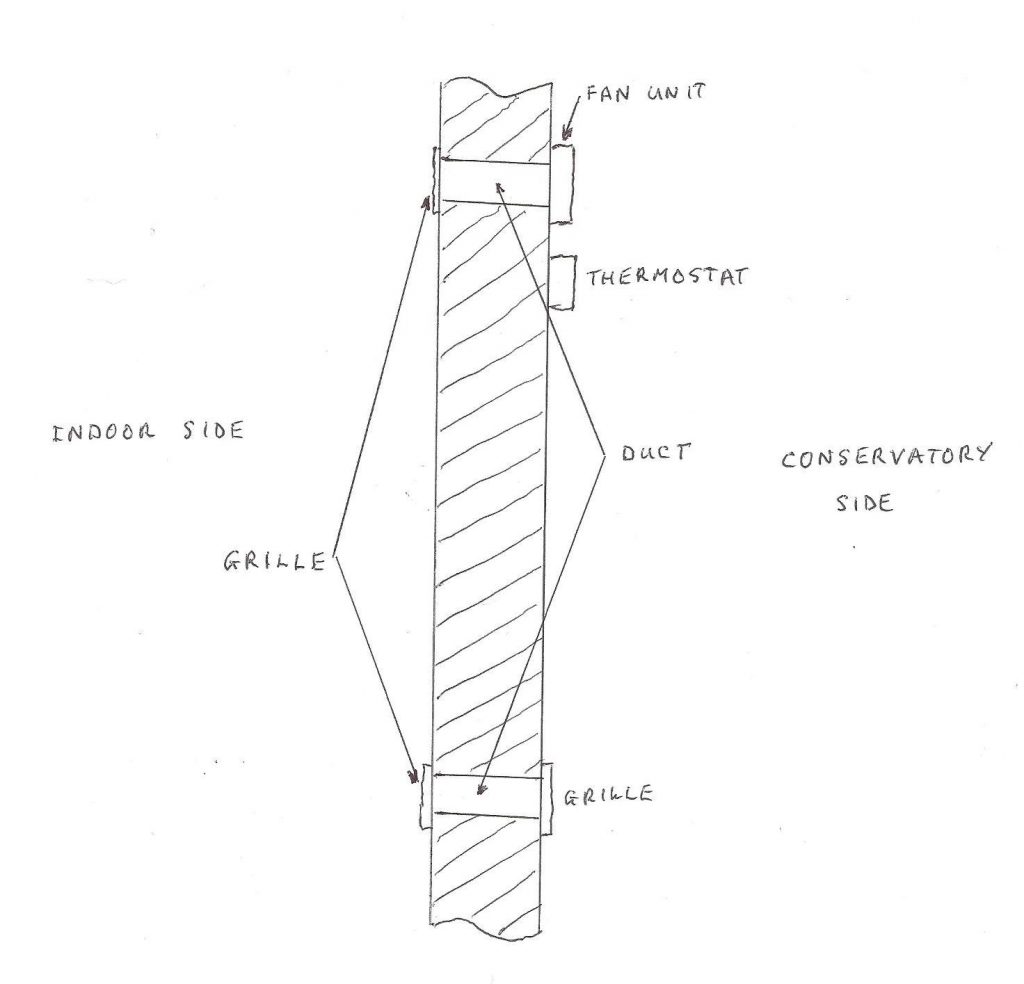Enthalpy is a term used in thermodynamics and is a measure of the internal energy plus the pressure times of the volume of a system: H = E + PV. In terms of your home, the pressure and volume are reasonably constant, so any change in enthalpy would be a measure of the change in internal energy.
On most days we receive a goodly dollop (technical term) of totally free green energy from the orange ball in the sky. Some of this green energy we use fairly quickly, some we store for later use, but mostly we allow it to escape.
Let’s look at the different forms this green energy takes and see if we can capture more of it and just as importantly see if we can store more for later use.
Solar Gain
The solar radiation coming from the sun is what keeps our planet at a habitable temperature over much of its surface. This solar radiation heats up the surrounding air and thus reduces the heat loss from our homes. It also heats the fabric of the building (roof and south, east and west facing walls) which further reduces heat loss.
The sunlight coming through the windows, besides providing light, heats the internal fabric of the building and is therefore a free source of heat energy on sunny days. The heating of the external fabric of the building is not completely lost, in that even after the sun has set for the day, some of this energy will be keeping the brickwork warmer than the ambient air, and hence helping to reduce the heat loss from the building for some time.
Obviously we have little if any control over this, but if you are fortunate enough to have a conservatory (particularly one that is south facing), then you do have a good heat source over which you do have a degree of control.
At this time of year, by mid-morning, the temperature in our south facing conservatory has reached 22C. This is the point at which we open the sliding door and allow this free energy source to heat the southern end of our bungalow, where my wife has her woman-cave.
This has the effect of shutting down or at least reducing the amount of energy required to keep our home warm. In fact, by allowing the indoor temperature to increase to 23-24C we are actually storing heat energy in the internal fabric of the building along with the fixtures and fittings. This stored energy causes the time period over which the heating system needs to supply energy to be reduced, thereby saving energy and reducing costs.
Of course I have to carry out the arduous task of leaving the safety of my man-cave and venturing through our home to the conservatory where I measure the temperature. I then have to make the executive decision as to whether or not it is warm enough to open the conservatory door and allow this heat energy into our bungalow.
By way of example, at 10am on April 22, 2021, it was indeed 22C and the door was opened to the delight of my wife. The outdoor temperature at the time was a blistering 8C. The door remained open throughout the day until approximately 7pm, at which point the door was closed to help contain this captured energy within our home. It was somewhere between 11pm and midnight before our heating system was called upon to provide some further heat energy.
While this works well for us since we have a small property, all at the same level, it could still be beneficial for larger properties and houses where one or possibly more rooms could benefit from free green energy. Since solar energy is about as green as energy can get, it should be utilised as much as possible to reduce our dependency on other forms of heating.
For those of you who may not be at home to open and close any conservatory doors, I have shown a way in which the process of capturing and utilising this free energy could be automated, as shown in the image below.

A thermostat, at a suitable location within the conservatory, is used to control a fan unit on the inner wall. When the air temperature within the conservatory reaches the desired setting the fan is switched on and transfers the warm air from the conservatory into the building via a duct and grille. A further duct with grilles is placed at a lower level for the air to fully circulate.


